Blog, Industry News, trenchless people
Further expands to support drillers around the world.
THOMPSON, CONNECTICUT USA, October 26, 2016 – Numa, the world’s leading designer of DTH hammers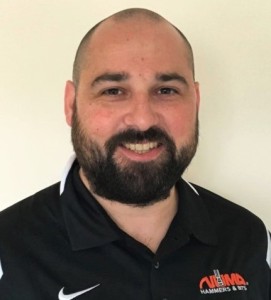 and bits, has announced the addition of Andrew Robertson to its international sales team. Based in Scotland, Andrew will be responsible for driving sales and supporting International customers in the field.
and bits, has announced the addition of Andrew Robertson to its international sales team. Based in Scotland, Andrew will be responsible for driving sales and supporting International customers in the field.
“With the further growth of Numa’s international presence, we continue to invest in supporting drillers with the latest DTH technology and best expertise available in the marketplace,” said Numa President, Ralph Leonard. “The addition of a drilling expert like Andrew Robertson further reinforces our strong commitment to that strategy.”
Andrew commented, “I am excited to join Numa and look forward to working with the team to deliver the world’s leading drilling technology. Having a wealth of experience in DTH drilling, I’m excited to support drillers with such a respected company that prides itself on top quality products and service.”
Andrew comes to Numa with over 11 years of experience in the down hole hammer and bit industry. Most recently he held product and sales roles with Atlas Copco in support of the company’s DTH product line. In this position, he traveled throughout the world to support dealer sales, provide field support, handle warranty claims, and assist with R&D projects.
Prior to his position with Atlas Copco, Andrew worked as a Sales Engineer with Numa distributor H & F Drilling in Scotland. During this time, he developed first-hand experience with Numa hammers and bits by supporting drillers on job site throughout Europe.
ABOUT NUMA
Numa designs the world’s leading rock drilling technology with over 100 DTH Hammer and Bit products serving 11 different industries. Our products are capable of drilling vertical, horizontal, and reverse circulation holes from 3½ to 48 inches (89 – 1219 mm) in diameter and are used in 105+ countries. We have built our customer-centric reputation on providing the highest value in products, performance, and personal service available in the rock drilling industry.
Blog, Industry News, trenchless products, trenchless projects
Swiftly-Assembled Machine to bore Emergency Water Supply Tunnel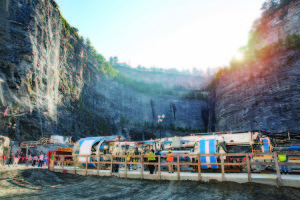
After an Onsite First Time Assembly (OFTA) lasting just 2.5 months, Atlanta Georgia, USA’s newest TBM, dubbed “Driller Mike”, made its initial startup on October 13, 2016 and ramped up to full production two weeks later. Atlanta’s Mayor Kasim Reed and city officials gathered with local and national media to celebrate the occasion. The 3.8 m (12.5 ft) diameter Robbins Main Beam TBM is now boring the 8.0 km (5.0 mi) Bellwood Tunnel after being walked forward 100 ft into a starter tunnel. The Bellwood Tunnel path will travel from an inactive quarry and run below a water treatment plant and reservoir before ending next to the Chattahoochee River.
The project was green-lighted by the City of Atlanta’s Department of Watershed Management due to the city’s 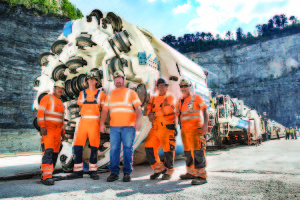 current emergency water supply shortage. The PC/Russell JV, the project’s construction manager at risk, sub-contracted with the Atkinson/Technique JV to operate the TBM and will oversee construction of various intake and pumping shafts as well as final lining operations. The project is of utmost importance for the City of Atlanta, explained Bob Huie, Sr. Project Manager for the PC/Russell JV. “Right now, the downtown area’s emergency water supply is approximately three days. With the tunnel the supply will increase to between 30 and 90 days. To be a part of the city’s emergency water supply solution is huge. This tunnel will protect the city for a very long time.”
current emergency water supply shortage. The PC/Russell JV, the project’s construction manager at risk, sub-contracted with the Atkinson/Technique JV to operate the TBM and will oversee construction of various intake and pumping shafts as well as final lining operations. The project is of utmost importance for the City of Atlanta, explained Bob Huie, Sr. Project Manager for the PC/Russell JV. “Right now, the downtown area’s emergency water supply is approximately three days. With the tunnel the supply will increase to between 30 and 90 days. To be a part of the city’s emergency water supply solution is huge. This tunnel will protect the city for a very long time.”
With the tunnel on the fast track, swift TBM assembly was key. The OFTA process involved coordination by multiple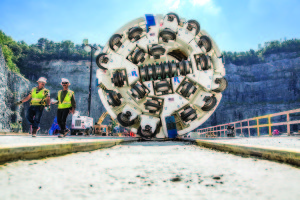 crews at the large quarry site. “The OFTA went very well. The overall assembly process was well organized and supervised by the Atkinson/Technique JV and Robbins. We had a good team of folks to put it all together,” said Huie. He continued: “This is a unique job where there’s a lot of people with a variety of backgrounds, but everyone came together to make the OFTA happen.”
crews at the large quarry site. “The OFTA went very well. The overall assembly process was well organized and supervised by the Atkinson/Technique JV and Robbins. We had a good team of folks to put it all together,” said Huie. He continued: “This is a unique job where there’s a lot of people with a variety of backgrounds, but everyone came together to make the OFTA happen.”
The Robbins TBM is now excavating in granite, with at least 300 m (1,000 ft) of zones in three separate areas that will require continuous probing. In a section directly below an existing reservoir, monitoring will be particularly crucial to ensure no water inflows occur. The Robbins machine will also be required to negotiate several curves: “We have one curve in the first 300 m (1,000 ft) and the main 370 m (1,200 ft) radius curve is 1,800 m (6,000 ft) in. We plan to do short TBM strokes in this section—about 20 cm (8 inches) to 30 cm (1 ft) shorter than normal to get through the curves,” said Larry Weslowski, Tunneling Superintendent for the PC/Russell JV.
Excavation is scheduled to be completed in the first quarter of 2018. After final lining, the tunnel will be filled with  water and the quarry site will become Atlanta’s largest reservoir and park, totaling hundreds of acres. While the park site is a bonus for residents, the water storage capacity it will provide is critical. Nearly 1.2 million customers, including 200,000 passengers who pass through the world’s busiest airport every day, count on the water supply each time they turn on the tap. “If the city were to lose water supply for a day, the estimated economic impact would be at least USD $100 million per day. If you consider that this is a USD $300 million project, that seems a pretty good investment in comparison to what could happen,” said Huie.
water and the quarry site will become Atlanta’s largest reservoir and park, totaling hundreds of acres. While the park site is a bonus for residents, the water storage capacity it will provide is critical. Nearly 1.2 million customers, including 200,000 passengers who pass through the world’s busiest airport every day, count on the water supply each time they turn on the tap. “If the city were to lose water supply for a day, the estimated economic impact would be at least USD $100 million per day. If you consider that this is a USD $300 million project, that seems a pretty good investment in comparison to what could happen,” said Huie.
Image 1: The Robbins Main Beam TBM, dubbed “Driller Mike”, was launched on Atlanta, Georgia, USA’s Bellwood Tunnel in October 2016.
Image 2: Robbins Field Service stand proudly in front of the completed Main Beam TBM after an Onsite First Time Assembly lasting just 2.5 months.
Image 3: The 3.8 m (12.5 ft) diameter Robbins Main Beam TBM will bore the 8.0 km (5.0 mi) Bellwood Tunnel through granite rock with potential zones of water inflows.
Image 4: Atlanta Mayor Kasim Reed (left) and Atlanta City Councilman Andre Dickens (right) attend the TBM’s launch ceremony to kick off the Bellwood Tunnel excavation.
Desiree Willis
Technical Writer
Email: willisd@robbinstbm.com
Direct: 253.872.4490
Uncategorized
Earlier this week we posted about Vermeer’s HDD training Program with the Des Moines Area Community College 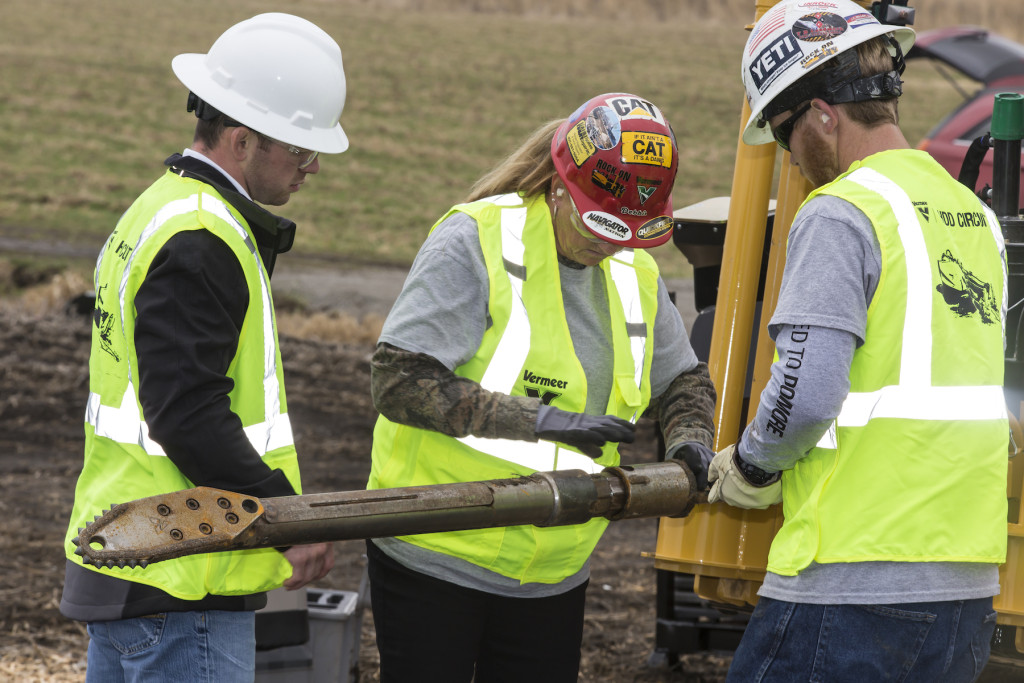 (DMACC). Today we’ll take a closer look at the most frequently asked questions about this new program.
(DMACC). Today we’ll take a closer look at the most frequently asked questions about this new program.
What is Vermeer HDD Circuit program?
The Vermeer HDD Circuit training program is a tuition-based, two-week instructor-led program that provides a mix of classroom time with hands-on experience in a small-group learning environment for anyone interested in a career in the growing horizontal directional drilling (HDD) industry.
During each two-week course, students are exposed to topics on HDD safety, jobsite evaluation and setup, drilling operation best practices, underground utility locating and potholing best practices, drilling fluid mixing and testing, proper bore and pullback techniques including the development of a bore plan, as well as basic drill maintenance and inspection.
The curriculum covers all aspects of horizontal directional drill operation from walking the bore plan, potholing, creating the bore plan, mixing the mud, proper drill maintenance and actual hands-on time with the drill. The goal of the training program is that each student who successfully completes the program will be able to be a productive drill operator. HDD Circuit program students must complete and pass a written test and hands-on evaluation in order to finish the program and become a certified HDD operator.
The goal of Vermeer is for students to leave the training program very confident in their abilities to operate a drill, use a locator and communicate with fellow crew members, as well as get more people into the industry.
Why should I consider a career in horizontal directional drilling?
For several years, Vermeer has received feedback from its customers and dealer network that there is a need for qualified operators in the horizontal directional drilling industry. Existing contractors are having difficulty completing work or taking on new business due to lack of qualified drill operators. With HDD Circuit program, Vermeer is working to help grow the industry and cultivate a pool of potential drill operators that will make HDD a career.
How does HDD Circuit program differ from other training programs?
Vermeer limits training classes to eight individuals, so each locator-operator team gets one-on-one attention from a drilling expert. During the two-week HDD Circuit program, each locator-operator team will get approximately 40 hours of classroom time and 40 hours of hands-on experience — 20 hours locating and 20 hours operating the drill in the field.
The curriculum focuses on setup, safety, transportation, preparation and execution. To help prepare crew members for real jobsite challenges, the demo site utilizes a designated utility zone where the students will locate and vacuum excavate these utilities instead of using dummy setups. Participants will learn how to pothole and locate these utilities, load a trailer, set up a drill, mix and test drilling mud, create a bore plan and pullback actual product.
We recognize that not every ground condition or situation a drill operator may face in the field will be present during the training. What we’re teaching is how to fundamentally be an operator and/or locator, so participants start to know what to look for, what to feel for and how to properly handle situations.
What equipment will be used during the training?
Class participants will learn to use a Vermeer D20x22 S3 Navigator® HDD, a Vermeer MX240 mixing system, a McLaughlin vacuum excavator and DCI® F5 locator. Since telematics are a growing trend, participants will be exposed to the Vermeer bore planning tools and Vermeer BoreAssist productivity tools. Vermeer will also teach participants how to create bore plans by hand, in case they don’t have access to the software once they return home.
What is the importance of the certified HDD operator designation?
Each student that successfully completes the HDD Circuit program will be classified as a certified HDD operator. Other HDD training programs provide participants with a certificate of completion. However, due to the partnership with Des Moines Area Community College (DMACC), HDD Circuit program is now the only certified HDD operator training program of its kind in the nation. This means contractors employing individuals who have completed the HDD Circuit training program know they have received extensive training and can walk a bore, plan to bore, set up a bore and complete a bore.
Vermeer has partnered with DMACC to certify the HDD Circuit program curriculum. DMACC is an accredited two-year college and their administration reviewed, approved and agreed to include the HDD Circuit program curriculum as part of the college’s academic non-credit class offering beginning fall 2016.
Who will lead the training?
Vermeer will provide instructors with extensive directional drill operating experience to lead and provide all of the hands-on experience and classroom training at our training site in Pella, Iowa.
How often will the training be offered?
Vermeer plans to hold one two-week class almost every month from March through November.
How can veterans use their GI Bill benefits to attend the training program?
DMACC and Vermeer worked with the Veterans Administration to review and certify the HDD Circuit program curriculum. Because the HDD Circuit training program is now certified by the Veterans Administration, veterans can use their GI Bill benefits to help cover the cost of tuition and lodging, in addition to making employers eligible for partial wage reimbursement once hired. This provides an opportunity for veterans to obtain training and help address the shortage of drill operators in the industry.
Can someone exploring a career change enroll in HDD Circuit program?
The answer is yes. Now that HDD Circuit program is certified by DMACC, anyone looking for a career in the construction industry can enroll in HDD Circuit program and receive training.
What happens when a trainee goes back home and has a question?
The Vermeer training team follows up with program attendees to see how things are going after they return home. If the crews have questions, Vermeer can help address those, as well as refer them back to their HDD Circuit training program manuals. Attendees are also supported, following the class, by their local Vermeer dealer.
How do individuals register for an HDD Circuit training program session?
Interested individuals should go to Vermeer.com to learn more about the HDD Circuit training program. To register for an upcoming training session, the interested individual will click on a link and be redirected to the DMACC registration site or visit DMACC.edu. Here they can review the training schedule, select a training session and pay tuition fees.
What is the cost of the program?
Vermeer provides training on state-of-the-art machines and uses cutting edge technology to ensure the attendee is equipped with the right skills for the job. The cost of the two-week training program is $4,000 plus lodging and some select meals.
Who do I contact for more information?
To learn more about HDD Circuit program and register for an upcoming training class, go online at Vermeer.com or DMACC.edu or contact Vermeer at HDDCircuit@Vermeer.com.
Blog, Industry News, trenchless people
The Annual International No-Dig Conference is the flagship of ISTT’s education and training effort. The 34th  International No-Dig Conference & Exhibition was held in October in Beijing, China at the National Agriculture Exhibition Center. The Center is a state-of-the-art facility located in the heart of Beijing.
International No-Dig Conference & Exhibition was held in October in Beijing, China at the National Agriculture Exhibition Center. The Center is a state-of-the-art facility located in the heart of Beijing.
The China Society for Trenchless Technology hosted the conference. Mr. Wang Fuming, Chairman of the China Society stated, “Beijing, the capital of the People’s Republic of China, is a vibrant, dynamic city with a rich history and may attractions. Beijing is not only a must-see place to visit, it is also a key center of trenchless activity in China. Many major trenchless and underground construction companies are headquartered in Beijing. Trenchless also has played a significant role in meeting the challenges of underground construction in a heavily urbanized area with minimum social and economic impact and disruption.”
During the conference, ISTT held their annual board meeting where Dr. Samuel Ariaratnam, the past chairman of 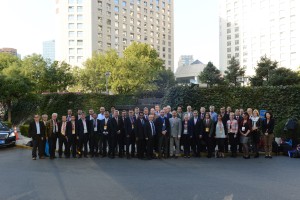 ISTT, completed his tenure and Mr. Enrico Boi became the chairman, along with Mr. Jari Kaukonen as vice chairman. Mr. Enrico Boi is from the NASTT (North American Society) and Mr. Jari Kaukonen is from FiSTT (Finnish Society).
ISTT, completed his tenure and Mr. Enrico Boi became the chairman, along with Mr. Jari Kaukonen as vice chairman. Mr. Enrico Boi is from the NASTT (North American Society) and Mr. Jari Kaukonen is from FiSTT (Finnish Society).
Blog, Industry News, trenchless people
PELLA, Iowa — Vermeer has created a partnership with the Des Moines Area Community College (DMACC) — 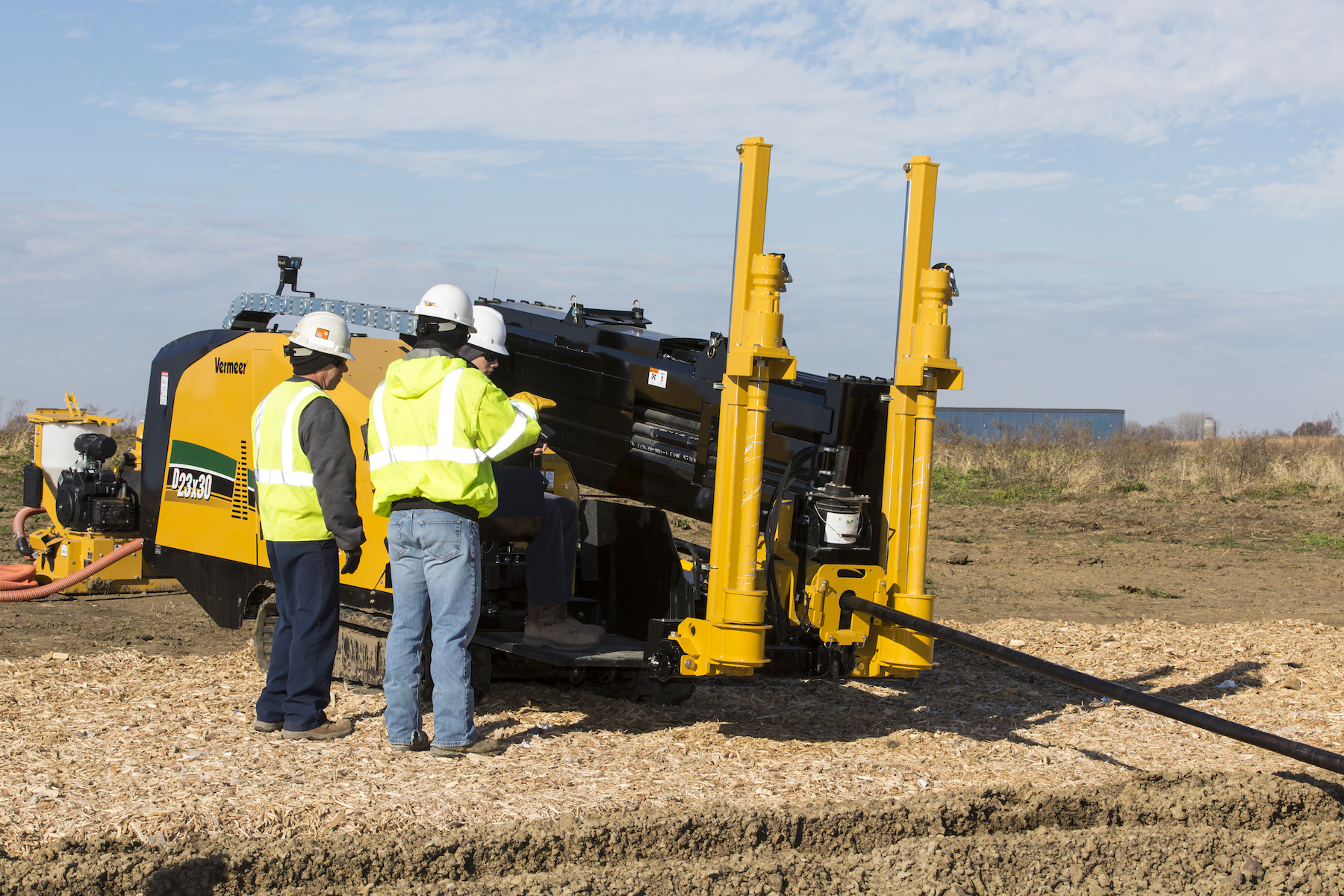 Iowa’s largest two-year college serving more than 75,000 students — to certify the Vermeer HDD CircuitSM training program. Individuals who complete the two-week, instructor-led program will be classified as a certified horizontal directional drill (HDD) operator.
Iowa’s largest two-year college serving more than 75,000 students — to certify the Vermeer HDD CircuitSM training program. Individuals who complete the two-week, instructor-led program will be classified as a certified horizontal directional drill (HDD) operator.
“Vermeer and DMACC are particularly excited about the potential benefits to our growing veteran population,” commented Rob Denson, president of DMACC. “The fact that the HDD Circuit training program is a certified addition to the DMACC curriculum offerings means that veterans can use their GI Bill benefits to cover the cost of the HDD Circuit program tuition and lodging to attend the two-week instructor-led program that provides a mix of classroom time with hands-on experience in a small-group learning environment.”
“DMACC has worked with Vermeer on a number of training initiatives focused on building the pipeline of skilled workers for its operations, but this is the most far-reaching effort to date,” said Denson. “Instead of training people to work at Vermeer, this innovative program is training individuals to work in the HDD industry, with skills that can be applied anywhere in the country or the world. These are high skilled jobs that provide outstanding career opportunities for individuals willing to train. DMACC is very proud to be able to certify this program.”
“This is the first-of-its-kind certified HDD operator training program in the nation,” said Dave Wisniewski, vice president, Underground products at Vermeer. “While other training programs may provide a certificate of completion, each student who successfully completes the Vermeer HDD Circuit training program will be certified as an HDD operator from an accredited college. This is important as more project owners are asking underground contractors to verify their HDD operators have received training.”
Vermeer HDD Circuit program will be taught by Vermeer trainers with extensive experience in horizontal directional drilling operation.
During each two-week course, students will be exposed to topics on HDD safety, jobsite evaluation and setup, drill operation best practices, underground utility locating and potholing best practices, drilling fluid mixing and testing, proper bore and pullback techniques including the development of a bore to plan, as well as basic drill maintenance and inspection. Students will get approximately 40 hours of classroom time and 40 hours of hands-on experience — 20 hours locating and 20 hours operating the drill in the field.
“The HDD Circuit program develops drillers who can walk a bore, plan a bore, set up a bore and complete a bore,” said Tony Bokhoven, Lifecycle training manager at Vermeer. “We are creating an opportunity for a new generation of drill operators to have a career in a growing global industry. At a time when the horizontal directional drilling industry is experiencing a shortage of drill operators, the HDD Circuit program is an ideal training program to help veterans, students and others looking for a way to enter this growing industry.”
The goal of the training program is that each student who successfully completes the program will be a productive drill operator or crew member. HDD Circuit program students must complete and pass a written test and hands-on evaluation in order to complete the program and receive the certified HDD operator designation.
To learn more about Vermeer HDD Circuit program and register for a future training class, visit DMACC.edu, Vermeer.com or contact Vermeer at HDDCircuit@vermeer.com.
 and bits, has announced the addition of Andrew Robertson to its international sales team. Based in Scotland, Andrew will be responsible for driving sales and supporting International customers in the field.
and bits, has announced the addition of Andrew Robertson to its international sales team. Based in Scotland, Andrew will be responsible for driving sales and supporting International customers in the field.







